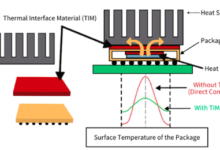The Ultimate Guide to Automotive Tuning Software for Precision Engine Optimization

In the world of automotive enthusiasts, the quest for optimal performance and engine efficiency is never-ending. Fortunately, advancements in automotive tuning software have revolutionized the way enthusiasts can optimize their vehicle’s engine performance. From adjusting fuel delivery to fine-tuning ignition timing, automotive tuning software offers a wealth of possibilities for achieving precision engine optimization. In this comprehensive guide, we’ll delve into the world of automotive tuning software, exploring its benefits, applications, and best practices for achieving precision engine optimization.
Understanding Automotive Tuning Software
Automotive tuning software, also known as Engine Control Unit (ECU) tuning software, allows enthusiasts and professionals to modify the settings of a vehicle’s ECU to optimize engine performance. These modifications can include adjustments to fuel delivery, ignition timing, turbocharger boost levels, and other critical engine parameters. By fine-tuning these parameters, automotive tuning software can unlock additional power, improve fuel efficiency, and enhance overall engine performance.
Benefits of Automotive Tuning Software
Unlock enhanced engine performance, improved fuel efficiency, and personalized driving dynamics with automotive tuning software, empowering you to optimize your vehicle’s power delivery and responsiveness while tailoring settings to suit your preferences.
- Increased Power and Torque: One of the primary benefits of automotive tuning software is the ability to extract more power and torque from the engine. By optimizing fuel and ignition parameters, tuning software can unleash additional performance potential, resulting in faster acceleration and higher top speeds.
- Improved Fuel Efficiency: Contrary to popular belief, automotive tuning software can also improve fuel efficiency when done correctly. By optimizing fuel delivery and combustion processes, tuning software can achieve better fuel economy without sacrificing performance.
- Enhanced Throttle Response: Tuning software can enhance throttle response by optimizing throttle mapping and pedal sensitivity. This translates to a more immediate and precise reaction to driver inputs, making the vehicle feel more responsive and engaging to drive.
- Customized Performance Settings: Automotive tuning software offers enthusiasts the flexibility to customize various engine parameters to suit their preferences and driving style. Whether it’s a more aggressive throttle response, sharper handling, or smoother power delivery, tuning software can tailor the vehicle’s performance characteristics to individual tastes.
- Diagnostic and Monitoring Capabilities: Many automotive tuning software packages come with built-in diagnostic and monitoring features that allow users to track various engine parameters in real-time. This can be invaluable for identifying potential issues, diagnosing problems, and fine-tuning performance settings on the fly.
Types of Automotive Tuning Software
Automotive tuning software comes in various forms, including standalone programs, ECU remapping tools, and diagnostic software, each offering unique capabilities to optimize engine performance, customize vehicle settings, and enhance driving dynamics.
- Standalone Engine Management Systems (EMS): Standalone EMS units replace the factory ECU with a programmable aftermarket unit. These systems offer the most flexibility and control over engine tuning but require more extensive installation and setup.
- Flash Tuning Software: Flash tuning software is designed to reprogram the vehicle’s stock ECU with custom performance maps. This approach is less invasive than standalone EMS systems and can often be done via the vehicle’s OBD-II port.
- Handheld Tuners: Handheld tuners are portable devices that allow users to upload preconfigured performance tunes to their vehicle’s ECU. While not as customizable as standalone EMS or flash tuning software, handheld tuners offer a convenient plug-and-play solution for enthusiasts seeking a quick performance boost.
- Online Tuning Services: Some tuning software platforms offer online tuning services where users can remotely connect with professional tuners to optimize their vehicle’s performance. This option is ideal for those who prefer expert guidance and personalized tuning solutions.
Best Practices for Using Automotive Tuning Software
Ensure optimal performance and reliability by following best practices for using automotive tuning software, including thorough research on compatibility, consulting with experienced professionals, and regular monitoring of performance metrics to fine-tune adjustments while preserving engine integrity.
- Research Thoroughly: Before using automotive tuning software, research different tuning options, compatibility with your vehicle, and potential risks and benefits. Familiarize yourself with the tuning process and ensure you understand the implications of making performance modifications.
- Choose Reputable Tuning Companies: Select reputable tuning companies with a track record of success and positive customer feedback. Avoid unverified or untrustworthy providers that may offer cheap or substandard tuning software.
- Backup Original Files: Before flashing a new tuning file to your vehicle’s ECU, always make a backup of the original factory file. This ensures that you can revert to stock settings if needed for warranty claims or troubleshooting.
- Understand Warranty Implications: Be aware that modifying your vehicle’s ECU may void manufacturer warranties and potentially impact insurance coverage. Consider the long-term implications before proceeding with automotive tuning.
- Monitor Engine Parameters: Use a diagnostic tool or software to monitor engine parameters such as air-fuel ratio, exhaust gas temperatures, and engine load after applying tuning software. Monitoring performance data can help identify potential issues and ensure that tuning settings are optimized for reliability and safety.
- Perform Regular Maintenance: Keep your vehicle properly maintained, including routine oil changes, fluid checks, and engine inspections. Regular maintenance helps ensure that your vehicle operates reliably and efficiently, especially after making performance modifications.
Conclusion
Automotive tuning software offers enthusiasts and professionals a powerful tool for achieving precision engine optimization and unlocking the full potential of modern vehicles. Whether you’re seeking more power on the track or better fuel efficiency on the highway, tuning software provides a versatile and accessible means of enhancing engine performance. By understanding the benefits, types, and best practices of automotive tuning software, enthusiasts can embark on a journey of personalized performance and driving enjoyment.






